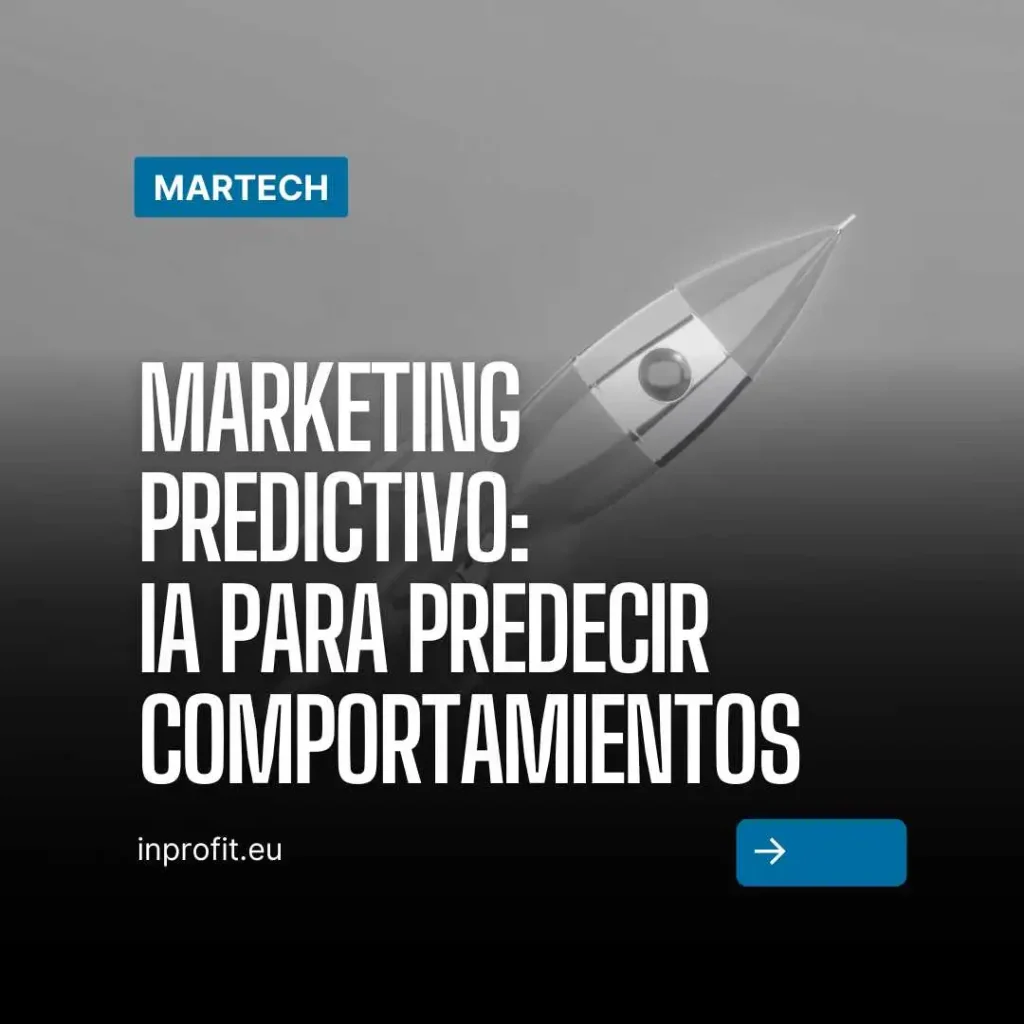Welcome to predictive marketing, where machine learning algorithms, propensity scoring models and data lakes are not optional, but the core of any competitive strategy.
Sales and predictive marketing
What sets this approach apart from traditional methodologies is its ability to transform seemingly unconnected data into actionable patterns. Platforms like Amazon already demonstrate the power of this technology, where 35% of their sales come from automated recommendations based on sophisticated predictive models. But this is not exclusive to technology giants; accessible tools now allow medium-sized companies and startups to implement these strategies without the need for teams of data scientists.
The true value of predictive marketing lies in its threefold capability: identifying hidden opportunities, optimizing limited resources and personalizing experiences on a massive scale. From calculating the exact probability that a lead will become a customer to determining the optimal time to send a personalized offer, these techniques are redefining the parameters of success in the digital world.
But this is not just another technological trend. It is a radical shift in the brand-customer relationship: from responding to anticipating, from guessing to predicting with scientific accuracy. Companies like Netflix (which saves $1B annually in retention thanks to its predictive models) or Starbucks (which optimizes store locations with geospatial AI) have had predictive solutions in place for years.
Discover how to implement real predictive marketing in your organization, even if you don’t have a team of data scientists. From customer lifetime value segmentation to content automation with GPT, we’ll show you how to transform data into tangible benefits.
The advance of predictive analytics
While traditional marketing segmented by age, gender or location, the predictive approach builds multidimensional profiles based on actual behavior. Advanced systems analyze thousands of data points per second, from the time a user spends on a given page to their history of interactions with previous campaigns, creating dynamic clusters that evolve in real time.
The RFM: New Scoring Models
The classic RFM (Recency, Frequency, Monetary) model is dead. In the age of predictive marketing, tools such as:
- Propensity-to-buy models (algorithms that calculate the probability of purchase in real time)
- Churn prediction with survival analysis (identifies when a customer is about to leave)
- Next-best-action engines (suggests the optimal step in each interaction)
are enabling brands like Amazon to achieve 35% higher conversion than their competitors.
Case study: A European airline reduced its churn rate by 22% when combined:
- Transactional data (previous flights)
- Contextual variables (recent searches in Kayak)
- Emotional signals (sentiment analysis in service calls)
to send personalized offers 48 hours before the customer showed explicit intent to purchase from the competitor.

Predictive Content: When your blog writes itself
Content is no longer created: it is dynamically orchestrated. Platforms like Persado use generative NLP to:
- Producing copy variants with higher conversion potential(predictive A/B testing)
- Adapt tone and message according to the reader’s psychological profile(psychographic segmentation).
- Rewriting meta descriptions based on changes in search intent(semantic SEO automation)
Chilling example: An email marketing campaign for a fintech generated 87 different versions of the same message, adjusting everything from the color of the CTA to the length of the paragraphs, based on the interaction history of each user. A CTR 210% higher than the industry average.
Predictive Customer Journey Mapping
Imagine knowing which lead in your funnel will convert in 9 days? What exact combination of touchpoints maximizes LTV per segment? When is a customer ready for an upsell?
This is possible through Markov chains applied to attribution modeling and reinforcement learning algorithms.
Key Fact: Companies with predictive journey maps achieve a 5.8x higher ROI on marketing spend.
How to get started with predictive analytics solutions?
Contrary to popular belief, adopting predictive marketing does not require multi-million dollar investments. Solutions like Google Analytics 4 offer built-in predictive models, while platforms like HubSpot provide advanced scoring tools accessible to sales teams. The key is to start with specific use cases: predict cart abandonment, optimize email delivery times or identify upsell-ready customers.
You don’t need an MIT team to apply predictive marketing. Tools such as:
- Adobe Marketo Engage (for predictive lead scoring)
- Dynamic Yield (real-time customization)
- Google Analytics 4 (with its native predictive models)
allow advanced strategies to be implemented with limited resources.
Quick guide:
- Start with a specific use case (e.g., predict cart abandonment).
- Uses first-party data (CRM, email opens, site interactions)
- Measure impact in CAC and LTV (not vanity metrics).
Are you ready for Predictive Marketing?
As algorithms become more sophisticated and tools more accessible, predictive marketing will move from being a differentiator to a core requirement. Companies that invest in these capabilities today are not only gaining a competitive advantage, they are building the foundation for survival in tomorrow’s business landscape.
What customer behavior would you like to be able to predict accurately? Would it be the ideal time to make an offer, the probability of conversion or the risk of abandonment? Share your thoughts and let’s explore how these technologies could transform your business strategy.
The future belongs to brands that stop asking “What did my customers do?” and start answering “What will they do tomorrow?”



